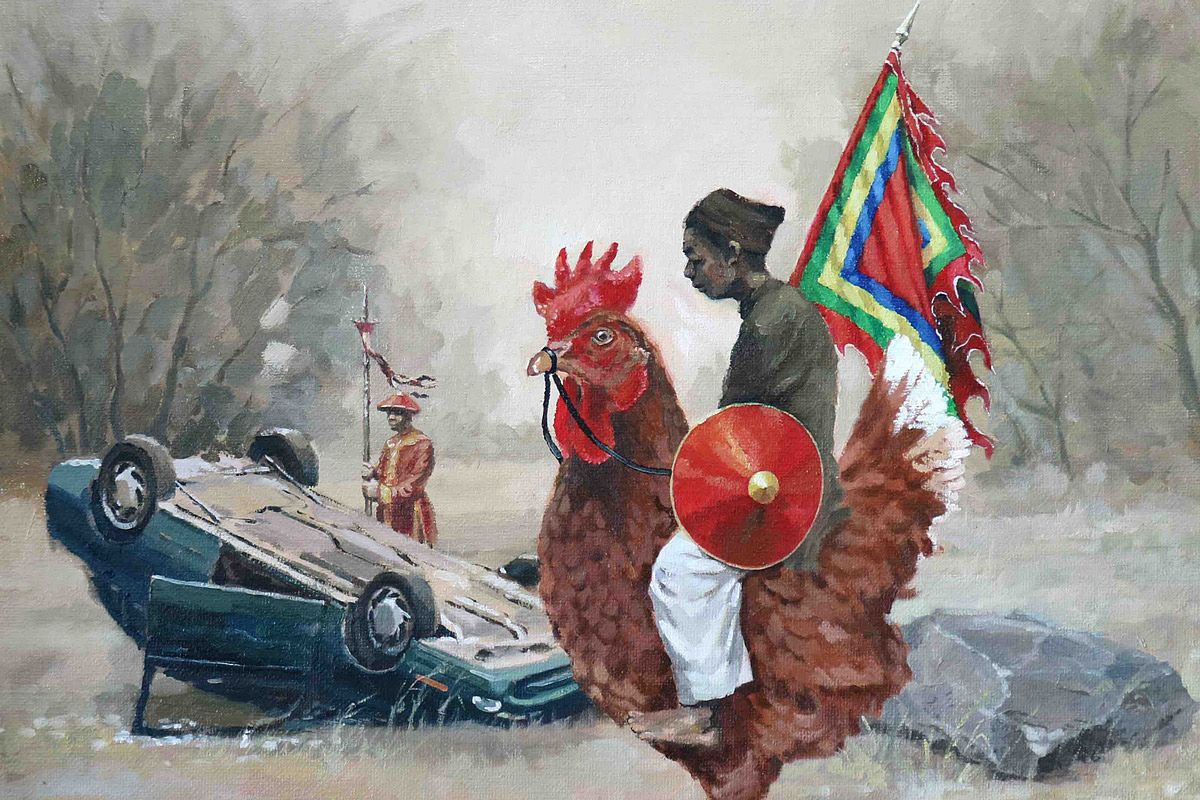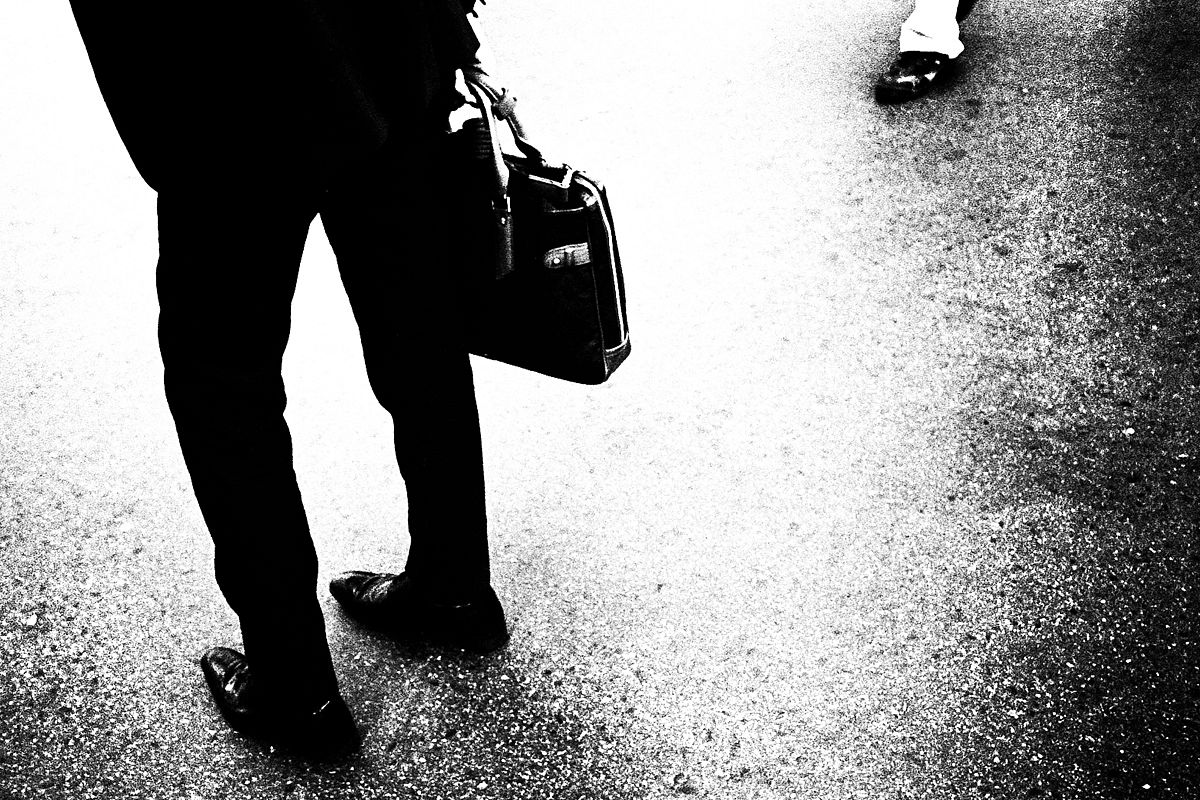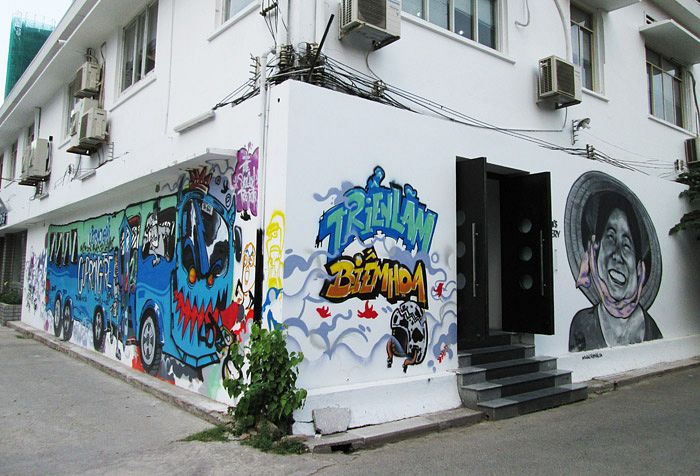Fragmented images of a bustling Saigon, Vietnam’s past and present, the theories of Francis Bacon and Carl Jung – all find a place within the intricate woodcut prints and ink illustrations of Jack Clayton’s latest solo exhibition at Decibel.
There are some artists who document the world around them, yielding to their own natural developments and shifting their art to match, and then there are others who dig deep into their own sensitivity and reshape what they experience through personal recollection. Jack Clayton belongs to the latter.
Upon entering the venue of his latest exhibition, a wave of different colors, styles and subjects hits the viewer, who might wonder what a traditional Vietnamese drum, a Space Panther poster and a cubist portrait might have to do with one another, but Jack Clayton’s woodcut prints and illustrations are more connected and cohesive than this initial impression might suggest.

Space Panther, Jack Clayton (2014), woodcut print, 30 x 40 cm. Image courtesy of the artist.
Five years ago, the British artist began traveling to different countries before eventually settling in Vietnam. Throughout this period, the subjects and techniques of his art changed as he absorbed these new cultures and landscapes.
Clayton’s first solo exhibition at deciBel – following a group show with Pat Bradbury in 2013 – comprises recent and new pieces inspired by his travels, his thoughts and Vietnam, the land in which he now lives.
As any experienced traveler can attest, the incomparable value of experiencing different cultures is that you learn about yourself as an individual. What begins as a discovery of other countries’ landscapes, traditions and history ultimately becomes a discovery of your own psyche and personality. Establishing and understanding the individual in relation to these new cultures is one of traveling's unique gifts.

Dong Son Drum, Jack Clayton (2013), pen and pencil illustration, digitally manipulated, 80 x 80 cm. Image courtesy of the artist.
Among my favorites, Dong Son Drum is the artist’s personal take on a centuries-old Vietnamese musical instrument. While he maintains the circular shape, geometric patterns and purpose of the ancient bronze drum – which was also used as a cult object depicting daily life as far back as the 3rd century BC – Clayton merges iconic images and landmarks with his own impressions of Vietnam. From afar, the rich, elaborate details of the drawing resemble the traditional aesthetic composition of a Dong Son drum, however a closer look reveals a recognizable yet different Vietnam, reflecting the artist’s perception of the country.

Compass, Jack Clayton (2015), pen and pencil illustration, digitally manipulated. 80 x 80 cm. Image courtesy of the artist.
The transfiguration of Saigon is visible in Compass, a pen-and-pencil drawing based on an American war compass, in which the British-born artist celebrates the past and present of the southern Vietnamese city. On the external circle, the city’s multiple names are drawn – Prey Nokor, Gia Dinh, Ho Chi Minh City and Saigon – reflecting on its multicultural formation. In the compass card, a realistic map of Saigon is filled with drawings aimed at highlighting the atmospheres and characteristics that distinguish each district.
Yet for all his incorporation of Vietnamese elements, Clayton is aware that it is ambitious for an artist to fully merge his own background with the country and culture in which he lives. Only the subconscious creative process can give way to the multiple realities that have entered an artist’s life. Impressions represents a conscious attempt to consolidate these multiple worlds. In the piece, Clayton depicts a face split in two, one half wearing the traditional Vietnamese conical hat while the other sports modern sunglasses. In the background, the anonymous face is surrounded by iconic images from London, Melbourne and Saigon.

How do you look at yourself, Jack Clayton (2014), woodcut print, 20 x 30 cm. Image courtesy of the artist.
Because I have lived in all these countries, the piece immediately brought back memories from each city, reminding me of the inevitable curse (or gift) that follows a person who has lived in more than one place: the impossibility of truly sharing and communicating the effects that these realities have had on oneself. Only by compartmentalizing them can each place and each experience be explained in a logical way.
With the presence of recognizable subjects, figures and locations as well as the use of a basic chromatic palette, the work assumes a visually pleasing aesthetic that invites viewers to stay and take in the artwork for longer, allowing them to establish a personal emotion by lingering first on the details until the overall feel surfaces from the prints.
This is exemplified in Hats, where the familiar illustration of people wearing nón lá hats is enriched by small details in the composition. The people in the print stand close to each other – representing the unity and strength of Vietnamese people – while before them are tall green mountains, which recall the historical need of Vietnam to protect the country from outside elements.

Bacon, Jack Clayton (2014), pen and pencil illustration, digitally manipulated.
The artist’s interest in analyzing the psyche and human nature becomes evident throughout most of the exhibits on display, whether inspired by Carl Jung’s theories on the human mind, Francis Bacon’s bleak views on mankind or Clayton's own personal observation of other cultures. Through this, Clayton has the ability to conceive humorous and evocative artwork that is strictly connected to him but still equally accessible to others.
Jack Clayton Solo Exhibition will be on display at decibel Lounge until November 14.
DeciBel Lounge
79/2 Phan Ke Binh, Dakao Ward, D1
08 62 710 115
Related Articles:
Event Rewind: Nón Lá Poétry @ 3A Alternative Art Area
Saigon Xưa: Young Artist Makes Incredible Drawings To Show Love Of Old Saigon
Zelda Goes To The Gallery: Khói Sóng














